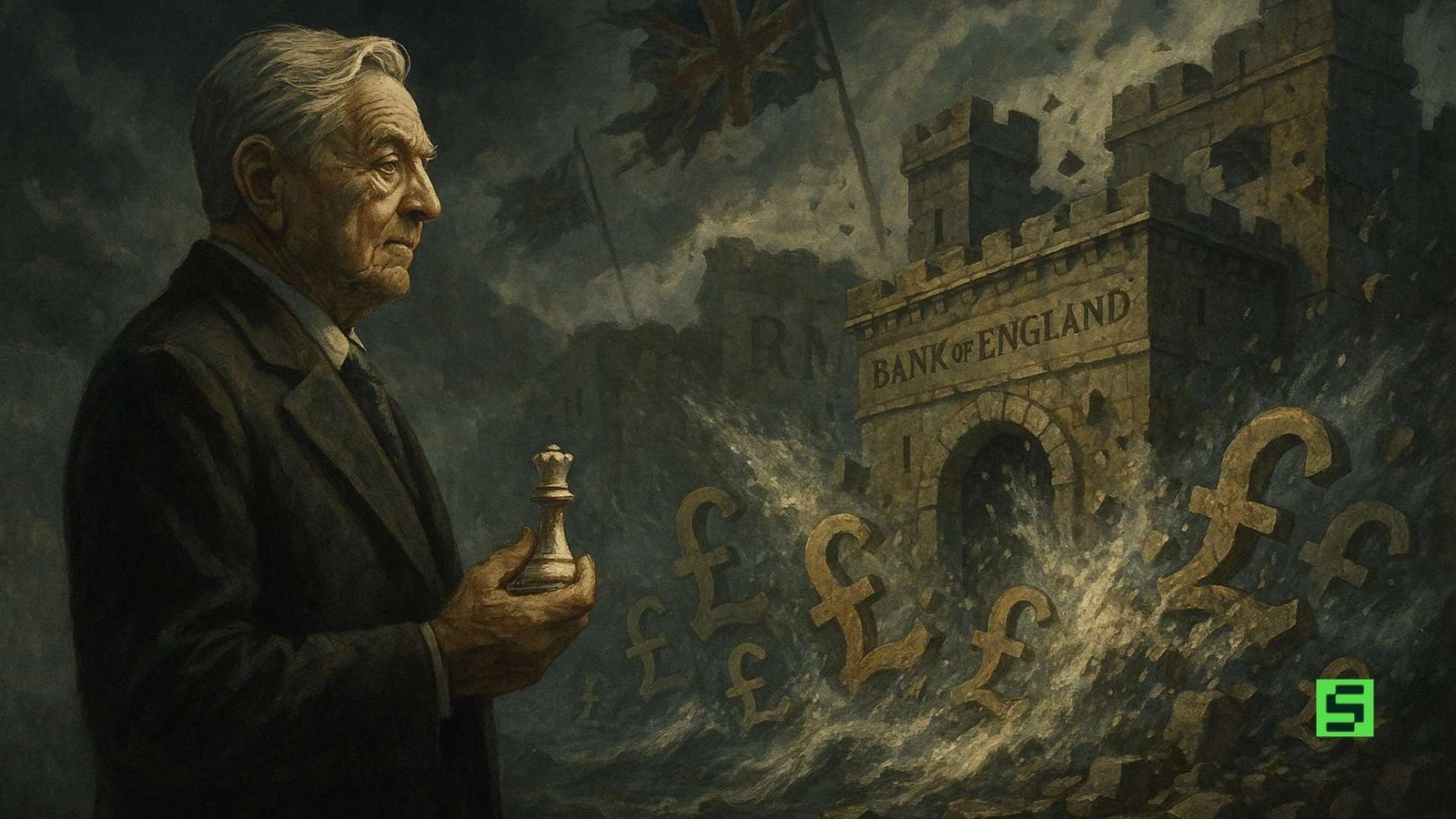If you’ve ever felt a sudden urge to jump into a trade because it seems like everyone else is making money, you’re not alone. This feeling has a name: FOMO, or Fear of Missing Out.
In trading, FOMO can lead to decisions that might seem exciting in the moment but often end up being costly mistakes. Let’s take a closer look at what FOMO is, why it matters, and how it impacts your trading.
What is FOMO?
FOMO stands for Fear of Missing Out. It’s the uneasy feeling you get when you think others are benefiting from something you’re not part of. In everyday life, this could mean feeling left out of social events. In trading, it shows up when you see others talking about big gains from a particular stock or cryptocurrency and feel pressured to join in.
When you’re exposed to constant updates about price spikes or overnight success stories, it’s easy to feel like you’re falling behind. You might start thinking that if you don’t act quickly, you’ll miss out on a life-changing opportunity.
The problem is that these decisions are often made without proper thought or analysis, which can lead to unnecessary risks.
Why FOMO Matters in Trading
Understanding FOMO is important because emotions play a significant role in financial decision-making. Trading isn’t just about numbers and charts; it’s also about managing your mindset. When emotions like fear or excitement take over, they can cloud your judgment and lead to poor choices.
1. Emotional Triggers Affect Decisions
Every trade you make is influenced by your emotional state. FOMO is one of the strongest emotional triggers because it pushes you to act quickly, often without considering the consequences. For example, you might buy into a trending asset simply because it’s popular, ignoring whether it aligns with your goals or risk tolerance.
This kind of impulsive behavior rarely ends well. Instead of following a thoughtful plan, you’re reacting to external pressures. Over time, this approach can erode your confidence and damage your portfolio.
2. Irrational Choices Lead to Losses
FOMO often results in irrational actions. You might enter a trade too late, after the price has already peaked, or hold onto a losing position longer than you should, hoping it will recover. These behaviors can compound, creating a cycle of bad decisions that become harder to break.
Even worse, FOMO can distract you from your long-term strategy. Instead of focusing on steady growth, you might find yourself chasing quick wins. This not only increases your risk but also takes away from the discipline needed to succeed in trading.
3. Building a Stronger Mindset
The key to overcoming FOMO is learning to manage your emotions. Successful traders know how to step back when they feel the urge to act impulsively. They rely on research, planning, and patience rather than reacting to market noise.
It’s important to remember that every trader’s journey is unique. Just because someone else is posting about their gains doesn’t mean you need to follow their path. Sticking to your own plan, even when it feels slow or unexciting, is often the smarter choice.
The Psychology Behind FOMO in Trading
To understand why FOMO happens in trading, we need to dig into the psychology behind it. Trading is not always about the strategies—it’s deeply tied to how our minds work. Emotions, biases, and external influences all play a role in shaping the decisions traders make. Let’s break it down.
1. The Role of Emotions in Trading
Emotions are powerful drivers of behavior, especially in high-stakes environments like financial markets. Two emotions stand out when it comes to trading: greed and fear. These aren’t just abstract concepts—they’re real forces that can push people to act against their best interests.
Greed and Fear in Action
Greed often shows up as the desire to chase big returns quickly. When you see others making money, it’s tempting to want the same for yourself. This can lead to taking on more risk than you’re comfortable with or abandoning your strategy in favor of short-term gains.
Fear, on the other hand, manifests as the worry of missing out on opportunities or losing what you already have. In the context of FOMO, fear is particularly strong because it creates a sense of urgency. You might feel like if you don’t act now, you’ll lose your chance forever.
Social Proof and Herd Mentality
Humans are social creatures, and we often look to others for cues on how to behave. In trading, this tendency is known as social proof or herd mentality. When you see a large group of people jumping into a particular trade, it’s easy to assume they know something you don’t. This can lead to a snowball effect, where more and more people pile into a trade simply because others are doing it.
The problem with herd mentality is that it doesn’t always align with logic or fundamentals. Markets driven by hype can rise quickly but also crash just as fast when sentiment shifts. Following the crowd without questioning why can leave you exposed to unnecessary risks.
2. Cognitive Biases That Fuel FOMO
Our brains are wired to take shortcuts when processing information, but these mental shortcuts—called cognitive biases—can distort our decision-making. In trading, certain biases make us more susceptible to FOMO.
Anchoring Bias
Anchoring bias occurs when you rely too heavily on the first piece of information you encounter. For example, if you hear about a stock that’s surged 20% in a day, that initial price movement might stick in your mind. Even if the stock later drops or shows signs of being overvalued, you might still fixate on that early gain and convince yourself it’s worth buying.
This bias makes it hard to adjust your perspective based on new data. Instead of evaluating the stock objectively, you’re anchored to its past performance, which can cloud your judgment.
Loss Aversion
Loss aversion refers to the tendency to fear losses more than we value equivalent gains. In the context of FOMO, this bias can be tricky. Traders often worry more about missing out on potential profits than they do about the risks of entering a bad trade. This fear of missing out can override rational analysis, leading to impulsive decisions.
For example, you might ignore warning signs about a volatile asset because you’re focused on the possibility of quick gains. The fear of regret—thinking “what if I missed out?”—can outweigh the importance of careful planning.
Confirmation Bias
Confirmation bias happens when you seek out information that supports what you already believe or want to believe. If you’re feeling the pull of FOMO, you might only pay attention to news or opinions that justify jumping into a trade. You might dismiss warnings or red flags because they don’t align with your desire to act.
This bias reinforces impulsive behavior by creating an echo chamber of positive reinforcement. It becomes harder to step back and consider alternative perspectives, which is crucial for making balanced decisions.
3. How Social Media Amplifies FOMO
Social media has transformed the way people approach trading. Platforms like Twitter, Reddit, and TikTok have made it easier than ever to share ideas, trends, and market moves. While this can be helpful for staying informed, it also amplifies FOMO in ways that weren’t possible before.
The Influence of Viral Trends
On social media, trading ideas can spread like wildfire. A single tweet or post about a stock or cryptocurrency can spark massive interest, drawing in thousands of traders who want a piece of the action. The speed and scale of these trends can create a sense of urgency, fueling FOMO and encouraging impulsive behavior.
For example, platforms like Reddit’s WallStreetBets have been credited with driving huge price swings in stocks like GameStop and AMC. Similarly, TikTok has become a hub for discussing meme stocks and cryptos, with users sharing stories of overnight success. These narratives can be compelling, but they often lack context or long-term perspective.
How to Avoid FOMO in Trading
FOMO (Fear of Missing Out) is a common challenge for traders, but it doesn’t have to control your decisions. By adopting the right mindset and strategies, you can minimize its impact and trade with greater confidence. Here’s how to avoid falling into the FOMO trap.
1. Develop a Solid Trading Plan
One of the most effective ways to combat FOMO is to create a trading plan and stick to it. A well-thought-out plan acts as your roadmap, helping you stay focused on your goals instead of getting distracted by market noise.
Set Clear Goals
Start by defining what you want to achieve through trading. Are you looking to build long-term wealth, generate supplemental income, or learn more about the markets? Your goals will shape your approach and help you determine which trades align with your objectives.
For example, if your goal is long-term growth, you’ll likely focus on stable assets rather than chasing volatile stocks or cryptos. Having clarity about your purpose makes it easier to resist impulsive decisions driven by FOMO.
Implement Risk Management
Risk management is a cornerstone of successful trading. Decide in advance how much capital you’re willing to risk on each trade and set stop-loss orders to limit potential losses. This not only protects your portfolio but also reduces the emotional pressure that comes with uncertainty.
By sticking to your predefined rules, you can avoid making rash decisions based on fear or excitement. For instance, if a stock you’re eyeing suddenly spikes, your plan will remind you to evaluate whether it fits your strategy—not just jump in because others are doing it.
2. Use Data-Driven Analysis
Trading shouldn’t be based on gut feelings or hype—it should be rooted in facts. Relying on technical and fundamental analysis helps you make informed decisions and keeps emotions in check.
Technical Analysis
Technical analysis involves studying price charts and patterns to identify trends and potential entry or exit points. Tools like moving averages, support and resistance levels, and indicators such as RSI (Relative Strength Index) provide objective data to guide your trades.
For example, if a stock’s price breaks above a key resistance level, it might signal an opportunity to buy. Conversely, if it falls below a support level, it could indicate a good time to sell. Using these tools ensures your decisions are based on evidence, not emotions.
Fundamental Analysis
Fundamental analysis focuses on understanding the intrinsic value of an asset. This includes examining financial statements, industry trends, and macroeconomic factors. For instance, before investing in a company, you might look at its revenue growth, debt levels, and competitive position.
Combining technical and fundamental analysis gives you a comprehensive view of the market, reducing the likelihood of being swayed by short-term hype.
Leverage Tools and Resources
There are plenty of trading tools available to help you analyze markets effectively. Platforms like TradingView, Yahoo Finance, and Bloomberg offer charting tools, news updates, and research reports. Additionally, educational resources like webinars, podcasts, and books can deepen your knowledge and sharpen your skills.
Using these resources consistently ensures you’re basing your trades on solid information rather than fleeting trends.
3. Practice Mindfulness and Discipline
Emotions are natural, but letting them dictate your actions can lead to costly mistakes. Practicing mindfulness and discipline helps you stay calm and focused, even during volatile times.
Manage Your Emotions
Mindfulness techniques, such as deep breathing or meditation, can help you regulate your emotions. When you feel the urge to act impulsively, take a step back and assess the situation objectively. Ask yourself: Is this decision based on logic, or am I reacting to fear or excitement?
Journaling is another useful practice. Writing down your thoughts and feelings about a trade can provide clarity and prevent rash decisions. Over time, you’ll start noticing patterns in your behavior, which can help you address recurring issues.
Take Breaks from Noise
Constant exposure to social media, news, and market updates can amplify FOMO. To counteract this, set boundaries around your consumption of information. For example, designate specific times to check the markets or limit your time on platforms like Twitter and Reddit.
Taking breaks allows you to recharge and refocus. It also reduces the temptation to chase every trend or react to every headline. Remember, the market will still be there when you return—there’s no need to rush.
Set Realistic Expectations
Finally, managing FOMO requires setting realistic expectations about trading. Not every trade will be profitable, and that’s okay. What matters is maintaining a disciplined approach and focusing on long-term results.
4. Accept Losses as Part of the Process
Losses are inevitable in trading, even for experienced professionals. Instead of viewing them as failures, see them as learning opportunities. Analyze what went wrong, adjust your strategy if needed, and move forward. Dwelling on losses only increases frustration and makes you more susceptible to FOMO.
Prioritize Long-Term Growth
Short-term gains might seem appealing, but they often come with higher risks. Instead of chasing quick wins, focus on building sustainable growth over time. This means investing in assets that align with your goals and holding them through market fluctuations.
For example, if you’re investing in index funds or blue-chip stocks, you’re likely aiming for steady appreciation rather than overnight riches. This patient approach reduces the pressure to constantly “beat the market” and helps you stay grounded.
Final Thoughts
Overcoming FOMO doesn’t mean shutting off your emotions completely. It means recognizing them and learning how to manage them. Good traders know that emotions are normal, but they don’t let those feelings take over. By sticking to a solid strategy, avoiding impulsive and reckless moves, you can reduce the impact FOMO has on your trading.
Take a step back, trust your process, and keep in mind that controlling your emotions is just as important as understanding the markets. You’re capable of making smarter, more thoughtful decisions.




